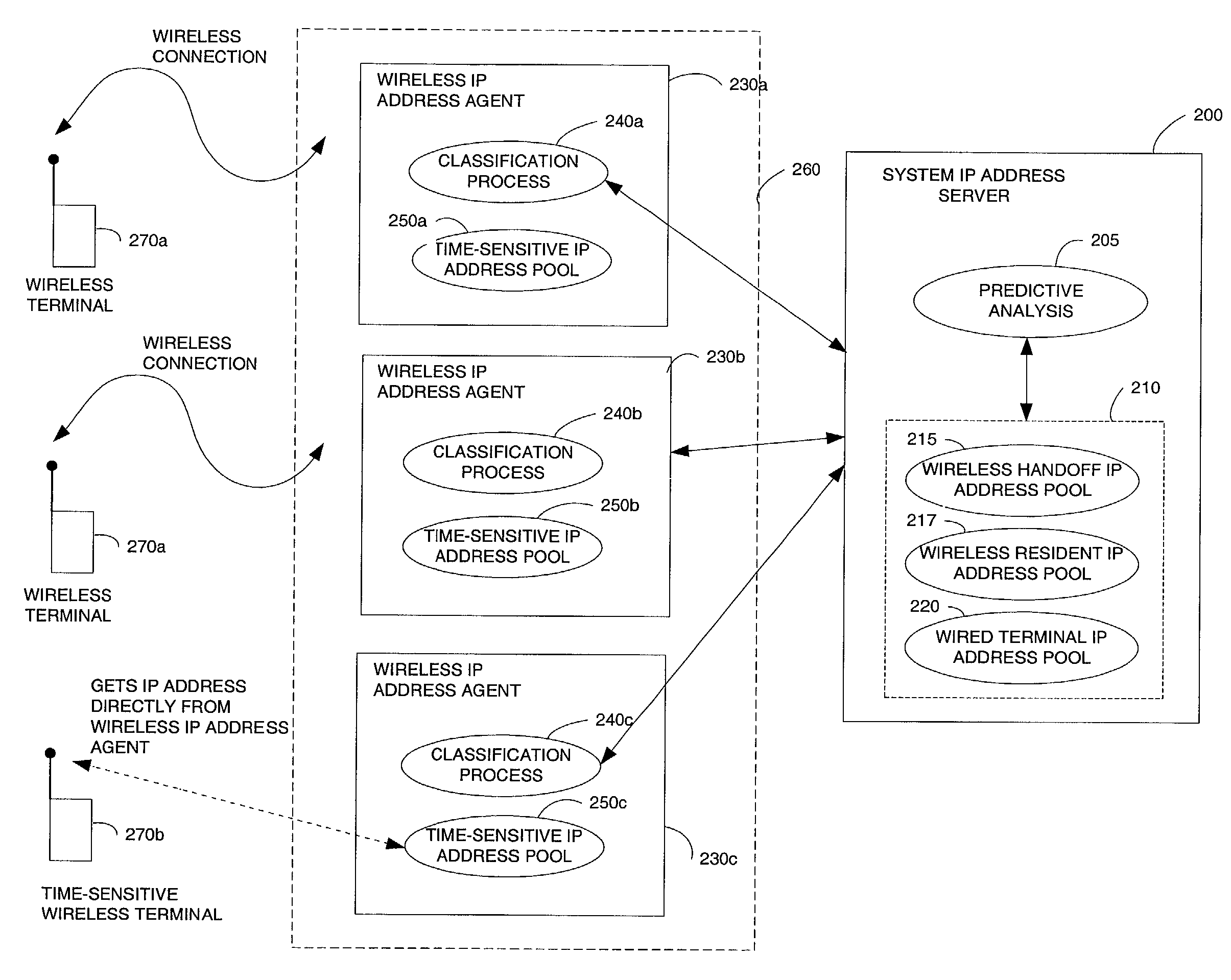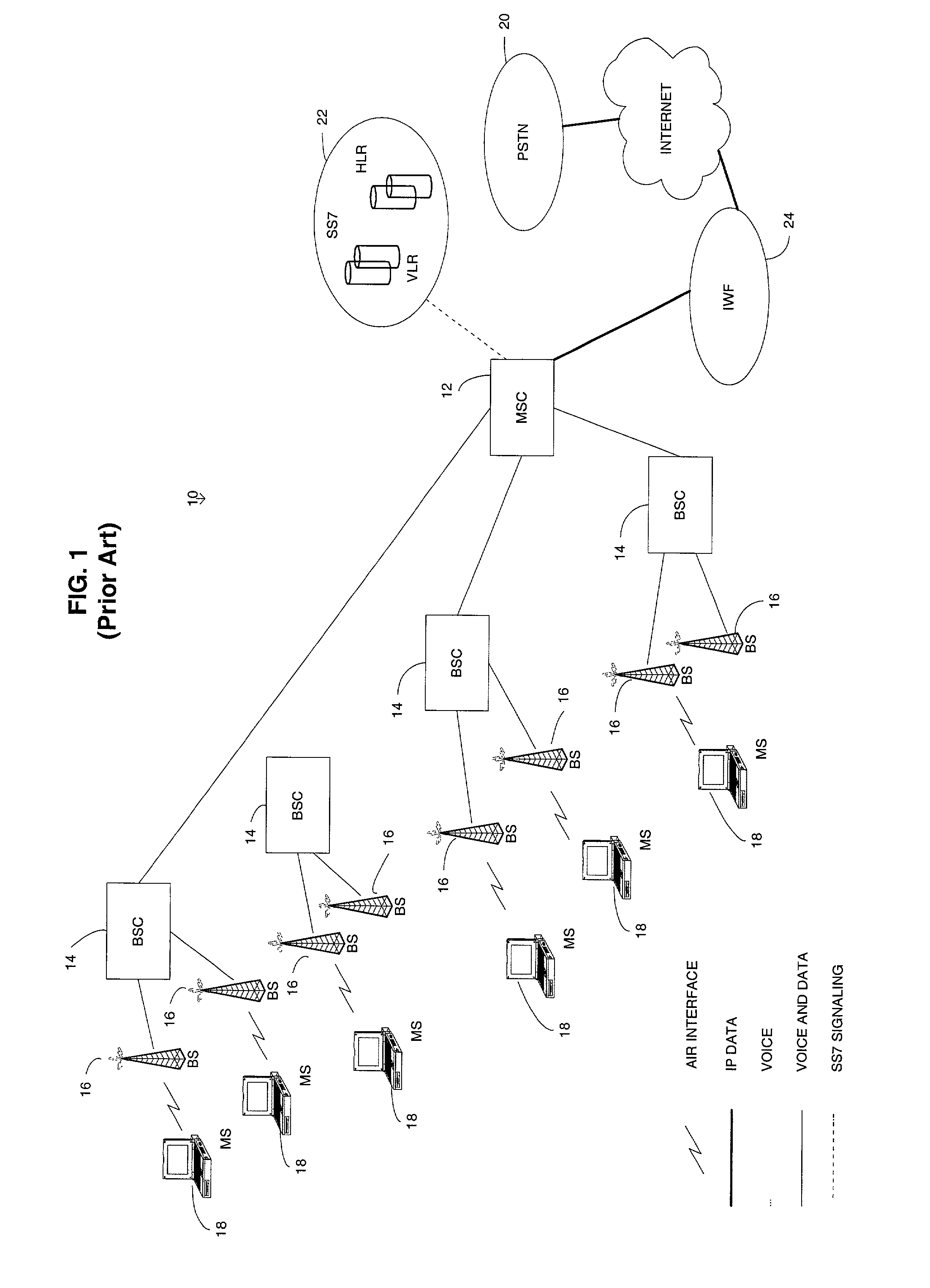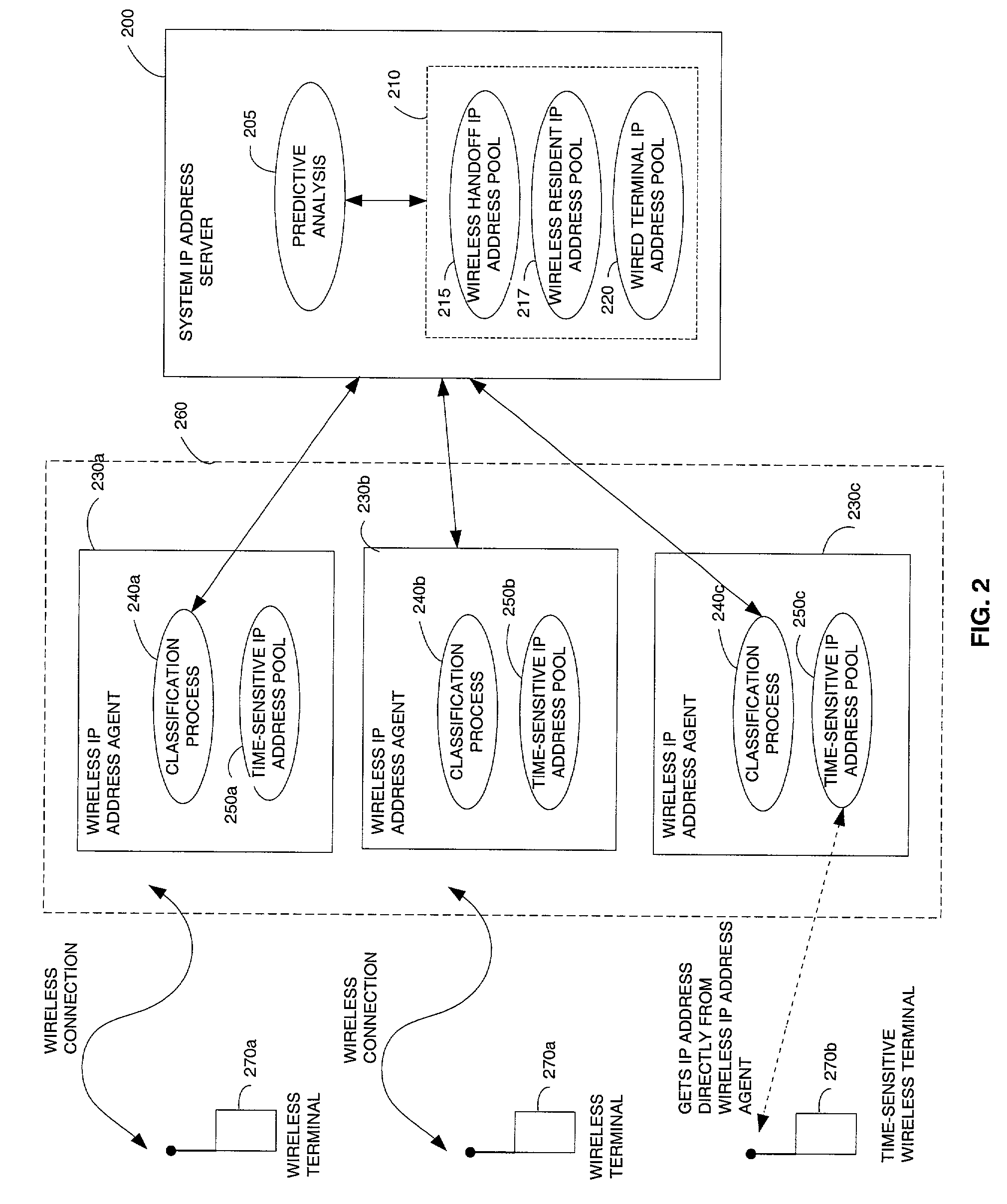Method for dynamically allocating IP addresses for time sensitive hosts based on priorities and guard bands
a dynamic allocation and host technology, applied in the field of mobile internet protocol (“ ip”), can solve the problems of network configuration suffer from several deficiencies, no flexible architecture for connecting a wireless access system to the internet backbone, and inability to maintain the internet session, so as to achieve the effect of reducing handoff latencies and high access priority
- Summary
- Abstract
- Description
- Claims
- Application Information
AI Technical Summary
Benefits of technology
Problems solved by technology
Method used
Image
Examples
Embodiment Construction
[0033]FIG. 2 is a schematic block diagram of shared IP servers without base station requests. The system and method of the invention provides dynamic addressing of servers (e.g., DHCP servers) such that the allocation of a proper portion of IP addresses to wireless host and wireline hosts is ensured. Wireless host 270a, 270b are end user devices which are connected to a network 260 via wireless channels. Such devices can be further categorized by whether they are in a handoff state (handoff) or are residents of a current wireless base station (resident).
[0034]In accordance with the invention, a single system IP address server 200 is used to periodically and dynamically update allocation pools of IP address which are reserved for wireless or wireline hosts 220. The system IP address server 200 controls an entire address pool 210, contains predictive analysis logic 205, performs a predictive analysis, partitions the IP addresses 210 into distinct address pools 215, 217, 220 such that ...
PUM
 Login to View More
Login to View More Abstract
Description
Claims
Application Information
 Login to View More
Login to View More - R&D
- Intellectual Property
- Life Sciences
- Materials
- Tech Scout
- Unparalleled Data Quality
- Higher Quality Content
- 60% Fewer Hallucinations
Browse by: Latest US Patents, China's latest patents, Technical Efficacy Thesaurus, Application Domain, Technology Topic, Popular Technical Reports.
© 2025 PatSnap. All rights reserved.Legal|Privacy policy|Modern Slavery Act Transparency Statement|Sitemap|About US| Contact US: help@patsnap.com



